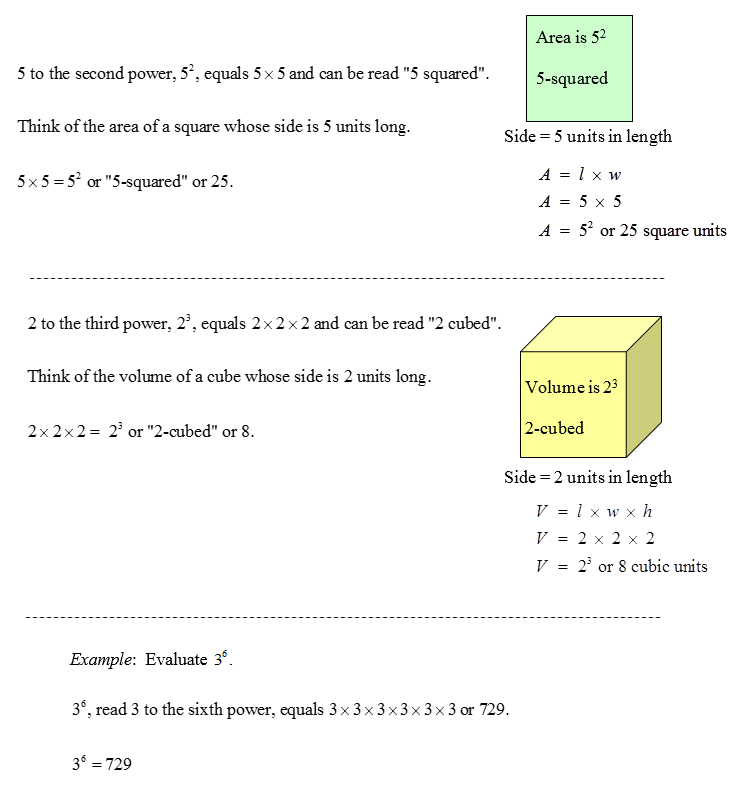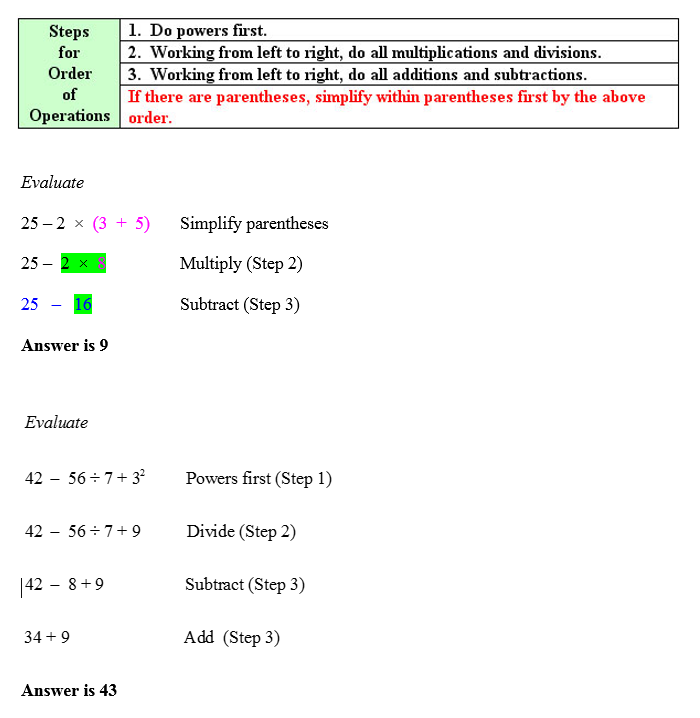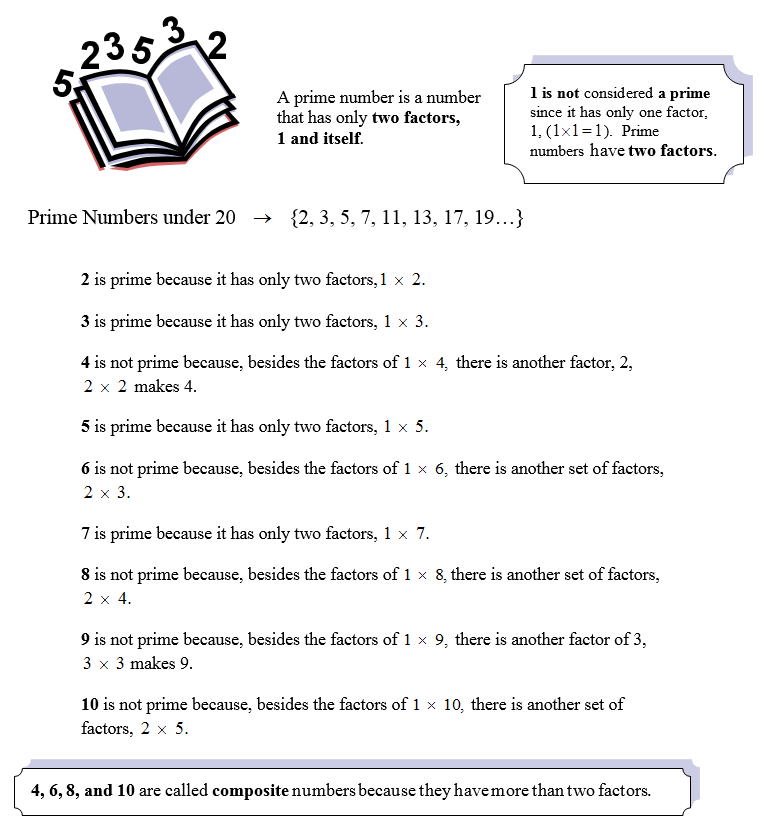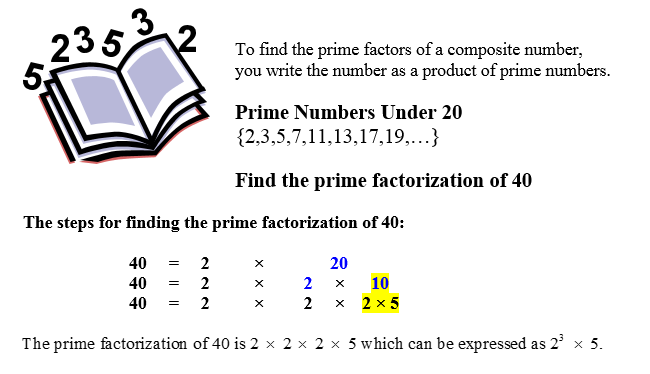
WELCOME!
We will explore lots of exciting topics in math and examine applications of the concepts learned in real world settings. Let’s begin with the basics, and then see how we apply them to actual math problems that are encountered in every day math.
FACTORS, EXPONENTS, AND ORDER OF OPERATIONS
We will begin by looking at numbers written in powers and expressed in factors. Numbers may be raised to powers. A number is said to be “square” when it is raised to the second power. Numbers raised to the third power are said to be “cubed”.
To evaluate mathematical expressions, there must be an order that everyone agrees upon; thus, mathematicians follow rules for evaluating expressions called “order of operations”. In order of operations the rules state which operations must be completed first.
PRIME NUMBERS AND PRIME FACTORIZATION
Numbers can be grouped into primes and composites. A prime number is a number that has only two factors, itself and 1. Composite numbers have more than two factors.
To find the prime factors of a composite number, write the number as a product of prime numbers called prime factorization.
Factors and Powers
 |

|
Prime and Composite Numbers
 |
 |
 |
| Unit 1 Order of Operations Worksheet |
| Unit 1 Prime Factors Worksheet |